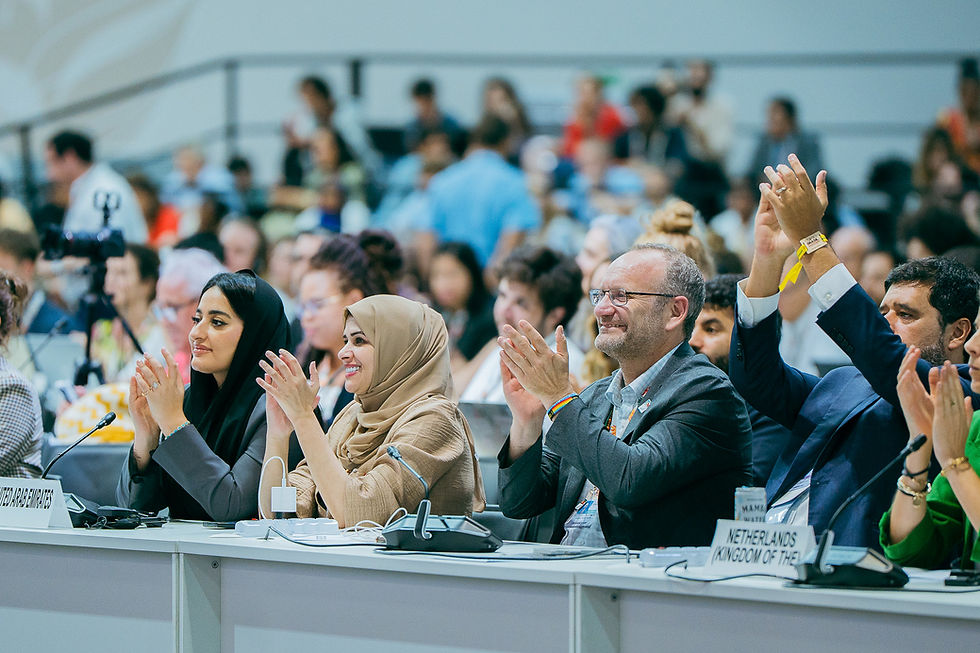Reflections from Davos
- Kavita Prakash Mani Executive Director, Grow Asia
- Mar 20, 2016
- 4 min read
DAVOS, SWITZERLAND - With a focus on the Fourth Industrial Revolution, the discussions at the World Economic Forum Annual Meeting in Davos in January 2016 revolved around the rise of robotics and impact on employment, the use of artificial intelligence to solve problems, the mining of big data to understand and predict trends, the interconnectivity of the world and the power of social media. All in the context of the slow-down in China, the increasing migration due to conflict, the potential exit of the UK from the European Union as well as the increasing geo-politics including in the Middle East and the South China Sea.

In this juxtaposition of current problems and future solutions, there was also a sense of achievement in having launched the Sustainable Development Goals (SDGs) which will guide the global progress towards a more socially just and environmentally sustainable future and the commitments to addressing climate change as agreed at the Congress of Parties (COP 21) in Paris towards the end of 2015. Together, these goals and commitments define how collaboration and dialogue can lay the ground work for sustainable development.
In this broader context, the discussions around food security and agriculture development also reflected the hope for a better future based on current commitment to action and collaboration. The SDGs set out 17 goals for 2030 including no poverty, no hunger, responsible consumption, and protection of the planet – all of which are intrinsically linked to agriculture development which can ensure sufficient and affordable food for all, increased incomes and rural development for half the world population that depends on agriculture for livelihood, and sustainable use of environmental resources such as water.
The SDGs also recognize that the goals are achievable only when all players collaborate – and this is written into the 17th goal as ‘Partnerships for the Goals’.
The World Economic Forum’s New Vision for Agriculture (NVA) initiative and its partnerships platforms including Grow Asia and PISAgro are built on the same premise – that multi-stakeholder collaboration between governments, businesses, civil society, farmers, international organizations and others are required to develop solutions that are holistic and address systemic issues in agriculture development. At the Annual Meeting, NVA hosted a number of events and discussions to bring together leaders from these different stakeholder groups to share experience and impact to date and develop a shared vision and roadmap for action going forward. Participants included Presidents and Ministers from partner countries, CEOs from global food companies, heads of international organizations like World Food Program and International Fund for Agriculture Development, farmer leaders and heads of NGOs, donor organizations including USA and the Netherlands. Thomas T. Lembong, Minister of Trade of Indonesia, also joined the session and actively engaged in the discussion, specifically highlighting the potential of mobile phones in changing lives of farmers and the need for financial inclusion.
The highlights of these discussions included:
Focusing on smallholders is critical to address food security and rural development. Efforts should continue to help these farmers achieve higher productivity and earn more income, while ensuring efforts are made to protect the environment especially resources like water, land and forests.
Capacity building and empowerment of farmers and farmer organizations will enable farmers to be an equal player in the market and negotiate for their own future.
Harnessing technology will enable greater scale and reach, especially mobile technology that has the ability to reach all farmers and link value chains and players.
Addressing gaps in financing both at the value chain level as well as at the farmer level will unlock greater investment and greater returns. Raising incomes of farmers will go a long way to bring them into the formal financial markets and also reduce the risk of borrowing and bad debts for farmers and banks.
Collaborative approaches, such as the World Food Program’s Patient Procurement Program, can consolidate demand for crops and result in greater investment in production and more secure markets for farmers.
Cluster strategies can similarly consolidate investment into specific agricultural geographies and provide all essential services to farmers at a local level, in turn attracting more partners to operate in the area.
Recognizing the need and value of partnerships at country and sector level, NVA launched a Country Partnership Guide that provides five principles and an 8-step framework on how country partnerships can be set up to effectively achieve the goals of agriculture development and food security. In addition, the Harvard Kennedy School launched a report on how system leadership is needed to deliver the integrated development results that are necessary to meet the SDGs. The report based its analysis on the NVA model and experience and learnings from Grow Asia, Grow Africa and the many country partnerships including PISAgro.
The common thread in all discussions was the need for strong visionary leadership, the need for collaboration, and the need for urgent action to address the global goals and tackle climate change. The opportunities and risks are well understood. Many of the solutions are available or should be possible through the fourth industrial revolution. What we need now is the willingness and the commitment of all actors.
Kavita Prakash-Mani Executive Director, Country Partnerships



